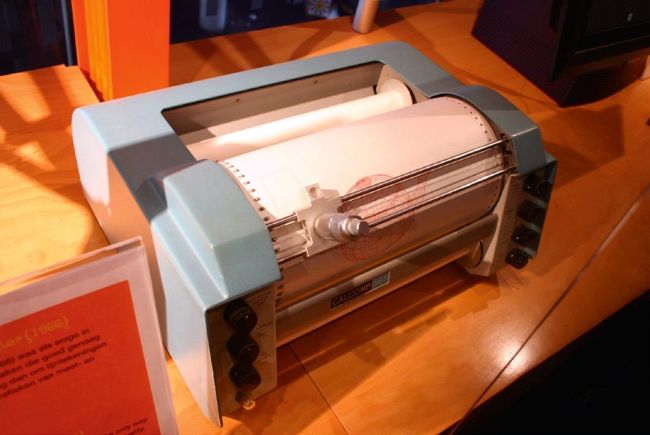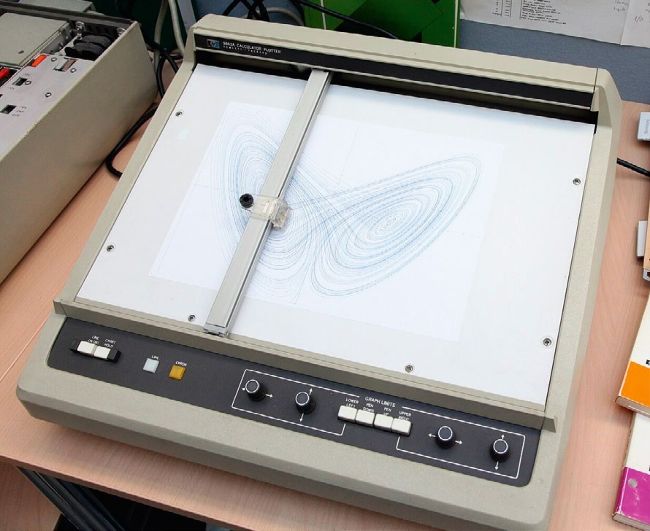Pen plotters
The rise and fall of pen plotters
RETRO DEVICES
Mike Bedford examines the pen plotter, before looking at how this apparently obsolete peripheral is making a comeback.
OUR EXPERT
Mike Bedford took a trip down memory lane when he used the Line-us plotter, as he’s previously used plotters – large ones at that – to implement an early GIS.
Everyone realises that today’s computers are the result of many years of development and E that the first computers were remarkably primitive by comparison. And, over the years, we’ve looked at several of these old computers that were influential in one way or another. Somewhat less obvious, perhaps, is how computer peripherals have changed over the decades. Yet in some cases, peripherals of yore have just ceased to exist. This was the case, for example, with VDUs, otherwise known as display terminals, which we looked at a few months ago. With the replacement of minicomputers by personal computers, there was no need for VDUs.
Here we’re looking at another peripheral that dates back to the early days of computing. And it’s true that newer technologies have pretty much replaced them. Yet, to slightly misquote Oscar Wilde, this isn’t necessarily the case, and this applies to our subject here. Specifically, reports of the death of the pen plotter have been greatly exaggerated. So, for those who are unfamiliar with this venerable peripheral, we’ll paint a picture of how earlier generations of computer programmers would have plotted graphs. Then we’ll go on to see how this peripheral is still with us, and offers you a fascinating avenue for experimentation.

Drum pen plotters could effectively work on paper of any length.
Robots and pens
Pen plotters date back to the ’60s and were commonly used with mainframes, often plotting offline from a magnetic tape. They were also commonly used on minicomputers. One of the initial players was Calcomp, indeed it supplied around 80% of plotters worldwide in 1969. Another manufacturer we should mention is Hewlett Packard, even if only because the graphics language it devised to communicate with its plotters, namely HP-GL, is still in use today.
QUICK TIP
One of the most bizarre uses of a pen plotter that we came across used a stick instead of a pen to draw in a tray of sand. It wasn’t altogether clear if the result was a temporary artwork, or whether some sort of spray was use to give it permanence.

Flatbed plotters had pens that moved in two dimensions.
Compared to today’s large-format inkjet printers – the peripheral that largely fills the same niche as this old device – pen plotters seem somewhat quaint. Otherwise known as graph plotters or perhaps just plotters, we could describe them as robotic devices fitted with a pen to draw on a sheet of paper. Despite the apparent low-tech nature of pen plotters, for several years they outperformed bitmapped graphics printers that started to appear during the era of the pen plotter. According to Hewlett Packard, albeit referring to an unknown date, “The resolution of output from graphics printers generally varied between 72dpi and 100dpi. But even HP’s earliest digital pen plotters could produce a line resolution equivalent to 1,000 dots per inch.” And if you want another comparison, let’s think about speed, even though the conclusion isn’t nearly as clear cut. We tend to think of the speed of a printer in terms of pages per minute, and while this is a rough statistic for several reasons, it’s totally meaningless for pen plotters. Because the speed depends not only on the plotter’s inherent speed, but also on the number of vectors, their length and the distance between them, timings for different images will vary wildly. Even so, we’d have to say that the plotter’s high resolution was mostly offset by its rather pedestrian speed.